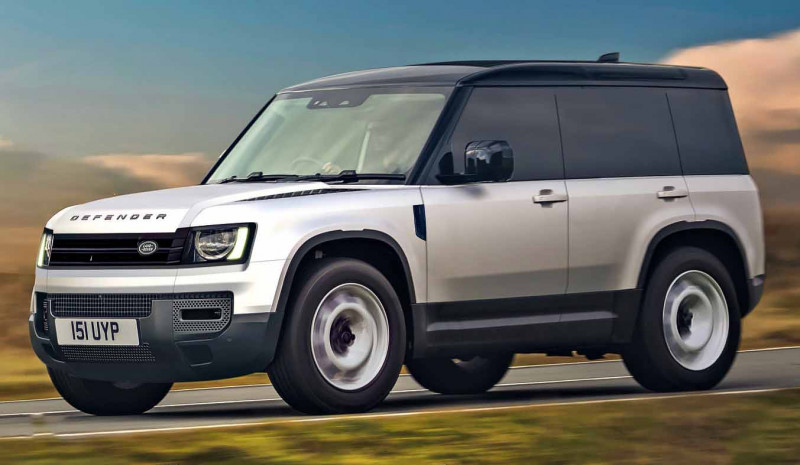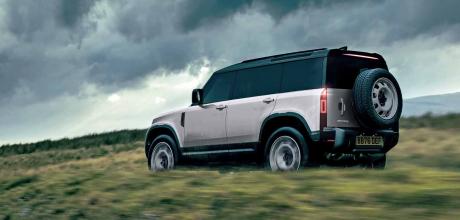Baby Defender - all-new entry-level Land Rover for 2027
‘Baby Defender’ to join JLR’s compact off-roader line-up. CEO confirms sign-off of long-awaited 4x4; Defender Sport name likely, due in 2027.
New baby Defender — as small as an Evoque and arriving in 2027
Land Rover has given the green light to its long-mooted and highly anticipated ‘baby Defender’ programme, which will take the 4x4 brand boldly into a new segment to face a whole new field of rivals.

The rugged, compact 4x4 is rumoured to have been on the cards for several years but has never officially appeared on JLR’s product roadmap presentations. However, it is now finally inbound as a sibling model to the next-generation Range Rover Evoque, Velar and Land Rover Discovery Sport, and it will share with them the company’s new EMA electric vehicle platform.
The move to expand the Defender family into the compact 4x4 segment was confirmed at JLR’s recent investor conference by CEO Adrian Mardell, who said the “Range Rover, Defender and Discovery brands will come off that platform”. The revelation shed further light on the mysterious fourth model line due to be built alongside the three electric SUVs, which are new-generation variants of current models, at the firm’s Halewood factory.
Mardell gave no further details, but the confirmation that the smaller Defender will use the electric-only EMA architecture reveals much about the new model. It could adopt the Defender Sport moniker, in keeping with the more road-focused versions of the Discovery and Range Rover, and arrive in dealerships as soon as 2027.
Most importantly, it will be much more compact in all dimensions compared with its full-size namesake, today’s combustion engine-powered ‘L663’ Defender. That car uses a variation of the D7 platform that also underpins the Discovery, but the promised electric variant, which is due in around 2026, will use the MLA structure from combustion-engined and future electric variants of the Range Rover.
The EMA-based smaller car, in turn, will be a similar size to its platform-mates. It is likely to measure around 4.6m long and 2m wide and stand at less than 1.8m tall, therefore making it similar in size to – albeit no doubt a good deal more expensive than – the upcoming Dacia Bigster and Skoda Kodiaq.
The move to introduce new Defender models is reflective of JLR’s ambition to separate each of its core brands – Jaguar, Discovery, Range Rover and Defender – into four distinct product lines. As part of this separation, which comes under the brand’s so-called ‘House of Brands’ retail strategy, the Defender strapline will be ‘embrace the impossible’, in a nod to the original car’s storied off-road heritage.
Speaking recently to DrivesToday, JLR’s marketing director, Anthony Bradbury, said: “It’s an explorer’s vehicle, it’s always pushed boundaries, it’s always physically allowed you to do things no other vehicle can. It’s about that spirit of embracing the impossible, and it has been like that for 75 years.” Defender-badged cars, he said, must have “that feeling of activation, of doing”.
Even the smallest entrant into the family will embody the rugged, go-anywhere ethos that made the Defender a household name. Squared-off lower quarters, purposeful body cladding and bluff, simple panels are likely to be employed both to draw a link with the full-size car and enhance the crossover’s off-roading credentials. Even despite its inherently more road-focused billing, an expansive suite of outdoors-themed add-ons is likely to be available.
Recent updates on the EMA platform suggest it is a ‘simple’ structure engineered to accommodate the advanced battery and propulsion technology needed to make it competitive against an increasingly crowded field of mid-sized SUVs.
EMA-based cars will be equipped with 800V charging architecture and capable of topping up as quickly as any EV currently on the market, most likely with a peak rate of 350kW, while the batteries themselves – supplied by Tata’s new UK-based factory (see separate story, far right) – will have a significantly higher energy density than those used by today’s Jaguar I-Pace. That will allow them to be slimmer and therefore make a smaller incursion into the cabin, which will be a boon for any Defender model given the nameplate’s long-standing affinity with family buyers and commercial operators. Slimmer batteries will also facilitate a raised ride height, which will again aid Land Rover’s aim for even its smallest cars to offer competitive off-road approach, breakover and departure angles, as well as the ability to wade to competitive depths.
Intriguingly, JLR has hinted at development of an ‘Ultra Range’ battery for its EMA-based SUVs, which would pack around 120kWh of usable capacity for a range of up to 450 miles – although that figure probably applies to the more aerodynamic, lower-slung cars using the platform. Any Defender-derived model’s inherently upright silhouette and lofty proportions mean it will concede a degree of long-distance capability.
Another headline introduction for the EMA, and one that holds particular promise for the Defender Sport, is that of a new family of electric motors, said to be simultaneously the most ‘torque-dense’ in their class (crucial for tricky, low-speed off-roading and towing) and among the most efficient, claimed to allow for running at an average of 4-4.5mpkWh. JLR has not yet revealed whether it will deploy single-, dual-, tri- or even quad-motor powertrains on its electric Land Rover models. However, each Defender model is likely to be an exclusively four-wheel-drive proposition, with the potential for torque vectoring allowing precise control of each individual motor, in a bid to ensure they adhere to the newly accentuated ethos of the Defender brand.
Today’s Defender accounts for a significant proportion of JLR’s global sales, and the model is listed as one of three high-margin cars (the others being the Range Rover and Range Rover Sport) that make up the bulk of the company’s 185,000-car order bank. Being priced from significantly less than its full-size sibling but with a comparable set of attributes and a tangible familial link, the Defender Sport has the potential to quickly become a key volume player for JLR globally. That outcome is especially significant from a UK perspective, given that the model is tipped to be built in Merseyside, using batteries manufactured in Somerset.
JLR has not said what proportion of global sales it hopes for its EMA-based models to achieve, much less each specific car using the platform. But the Range Rover Evoque and Land Rover Discovery Sport have been consistent strong sellers since their launches in 2011 and 2015 respectively. That lends credence to the notion that volume-friendly, downsized interpretations of iconic full-size SUVs hold appeal for a substantial portion of the premium car market and no doubt strengthens the case for a new take on the formula.
The Defender is poised to adopt new, torquedense electric motors.Production could take place at JLR’s Halewood plant. New Defender will share EMA platform with Evoque, Velar and Disco Sport. Each Defender model is likely to be an exclusively four-wheel-drive proposition New Defender will share EMA platform with Evoque, Velar and Disco Sport.
Baby Defender will share full-size model’s rugged off-road ability.
The rugged, compact 4x4 is rumoured to have been on the cards for several years.


